
26 minute read
27 28 32
24
For a Safer Cyber World
Advertisement
27
28
Taming of Trump
Test your GK
11 12 38 32 36 08
Idioms
KASE- Facilitating And Coordinating Various Skill Development Initiatives of the State
Business Challenges and Human Resources
Is your Job Offer Worth Accepting?
Important Days
40

Medical Updates
44
News Reel

20 49 50
Laugh it away
Reflection
Dear Readers EKL welcomes feedback/opinion/suggestions from esteemed readers. As a part of our policy of encouraging promising young writers, EKL solicits contributions from readers. The article can be on science and technology/environment/life style/economy/health/ history/economics or other matters of general interest. The length of the article may be limited to not more than 1500 words. One article selected by our Editorial Team will be published in each issue. Please mail them to ekl.tvm@gmail.com
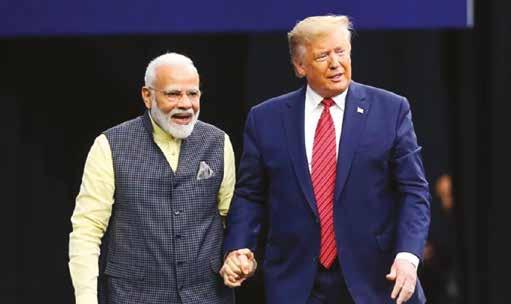
When President Donald Trump tweeted himself as Bahubali, a fearless Indian film hero, just before he began his journey to India, it appeared ominous. The hero, who grows up in a sheltered tribal village, is driven by extraordinary forces in search of an elusive goal and goes on an adventure into a completely unfamiliar territory. Moreover, Mr.Trump’s declaration that India was not cooperating in the trade talks and that a trade agreement was shelved till the next US election and that he was going to India only because he liked Prime Minister Modi lowered expectations about the success of the visit. The only silver lining was that Mr.Trump appeared excited about being received by “millions” of Indians and the road TAMING OF TRUMP show awaiting him in Ahmedabad. Mr.Trump’s record of having walked away from summits in Canada and Vietnam added to the anxiety of policy makers on both sides. Thirty six hours later, however, Mr.Trump appeared subdued, not wanting to say anything controversial for fear of causing any complications even when journalists from the United States and India were throwing provocative questions at him on Kashmir, the new Citizenship Law, religious freedom and the street violence in Delhi. He mentioned his readiness to mediate between India and Pakistan only in answer to a question and that too in the context of his having good relations with both Mr.Modi and Mr.Imran Khan. Realising that his T.P.Sreenivasan
own citizenship laws were harsher than Mr. Modi’s, he clearly stated that it was an internal matter of India. The violence in Delhi, he said, would be handled by the Indian authorities. As for religious freedom, he said that he found Mr.Modi a champion of religious freedom. A collective sigh of relief went up from the Indian and US officials when Air Force One took off from the Delhi airport. The transformation was palpable from the moment Mr.Trump arrived in Ahmedabad, participated in the roadshow and visited the evocative Sabarmati Ashram. He went through the rituals of Sabarmati like an obedient understudy, tried his hand at the charkha and wrote a tribute to Mr Modi rather than to Mr. Gandhi. He never departed from the teleprompter text at the Motera stadium. Most of what he said was about Mr. Modi’s accomplishments, India’s diversity and his own assessment of himself. The speech could be easily adapted by any Indian Ambassador for a credentials speech. It glorified India in every conceivable way. Bahubali was overtaken by two old Bollywood legends, one celebrating love (DDLJ) and the other proclaiming brotherly love (Sholay). If only his staff had tutored him how to pronounce Vivekananda and Sachin Tendulkar correctly, he would have been perfect. The Taj Mahal visit was pure poetry even for the elderly President and his young wife and the US comedians went to town on what they were thinking and doing there. They suggested that it would have been more appropriate for his daughter and son-in-law to have savoured the air of eternal love in the monument. In Delhi, things went like clock- work and Mr.Trump meticulously copied from a paper to the visitors’ book at Rajghat. He followed the advice given by the three monkeys at Sabarmati, whom Gandhiji found from a seventeenth century Japanese sculpture, to see no evil, hear no evil and speak no evil. What happened at Hyderabad was not known, but if the outcomes were to be an indication, there were no surprises there either and the bouquet of decisions that emerged were balanced, forward looking and fair both to the Super Power and the emerging power. If the choice was between making both sides equally happy and making them equally unhappy, the choice was the former and there were smiles all around. The Principals themselves announced the outcome which had no surprises. The initial agreement on trade, the done deal on the import of weapons, complete agreement on fighting terrorism, energy agreements, including a Memorandum of
Understanding for assured supplies of liquefied gas from the US and broad understanding on use of technology and others were win-win decisions. Most important of all, the strategic partnership between the two countries was transformed into a “Comprehensive Global Strategic Partnership,” though there was no clear definition of the term. “The Taming of Trump” in India should be a matter of study for all those interested in his future, particularly if he wins another term. Throughout his stay in India, the body language of Mr. Modi was like that of a lion trainer, extremely cautious, nervous and in total concentration. He had his eyes fixed on his guest for any sign of anger, frustration or sheer boredom. He kept praising Mr. Trump to engage him, prompting him to shower Mr.Modi with more and more flattery. Mr.Modi should, therefore, get credit for keeping the restless lion mesmerised with the charms of India and his host. Needless to say, the magic of India and the pomp and show, though the number of participants was much lower than his expectations, played a role in keeping Mr. Trump on the right track. Nowhere else could he have received such a reception and that alone may
have tamed him. His briefings may also have made him aware of the true potential of India for business and for countering China. His trade negotiations with China may have given him an idea of the complexities of similar negotiations with India and may have decided to use the salami tactic of slicing tiny pieces from the big fish. Did the uncertainties of the global economic and political situation caused by COVID-19 make him particularly cautious in making trade deals? Perhaps, President Trump was conscious of the fact that he and Mr.Modi would be leading their countries for another five years and decided to keep him in good humour. The future of Indo-Pacific and Afghanistan may also have been on his mind when he was in India. Of course, he did not take such a precaution with regard to the other world leaders and did not hesitate to ride roughshod over them. In the election year, Mr.Trump has already cultivated an image of a peace maker, a strategist and a thoughtful person, acting in the interest of his country. He demonstrated these new features in India and kept himself in control and good humour. Whether his transformation is permanent will be known when he deals with other countries, but India can take comfort in having tamed Mr.Trump.
Test GK Y O U R
1. Claustrophobia is the fear of what? 2. Granadilla is another name for which fruit? 3. What chess piece can only move diagonally? 4. What is another name for the study of fossils? 5. Where would you find the sea of tranquility? 6. Who invented the periodic table? 7. Which country is popularly called ‘The Land of the Maple
Leaf’? 8. Which planet is named after the Roman god of war? 9. To which age the Indus Valley
Civilization belongs? 10. Where is Indian Institute of
Petroleum located? 11. Who is the ‘author of the book
‘A Brief History of Time’? 12. Who was the first ‘Indian to swim across English Channel? 13. Who got the ‘Bharat Ratna’ award, before becoming the
President of India? 14. Which first Bank was established in India? 15. Which is known as the queen of spices? 16. On which date did the United
Nations Organisation come into existence? 17. The oldest monarchy in the world is that of which country? 18. The Kalinga Prize is given by which organization? 19. Which is the first Indian woman to reach Olympic finals in individual track events? 20. Which company first developed the Java programming language?
SUDOKU-2 Why not give a small exercise to your brain by trying to solve this puzzle? (Clue : Fill the given 9×9 grid with digits so that each column, each row, and each of the nine 3×3 subgrids that compose the grid contain all of the digits from 1 to 9.)
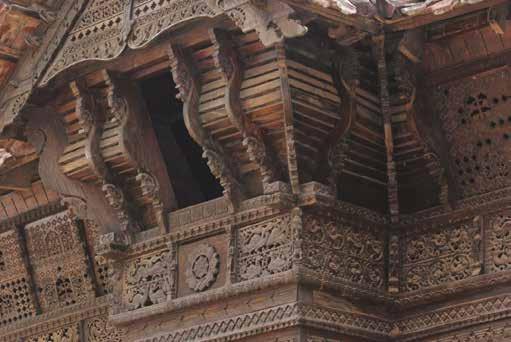
Indian architecture has manifestations that cover a rich heritage of building traditions. Among these, Kerala in the southwestern tip of India holds a distinct position due to the richness and the development of its wooden building science. Endowed with ancient institutions of religion and culture, Kerala’s traditional architecture comprises temples, palaces and dwellings built in a unique system of wooden construction. The homogeneity and continuity in the traditional architecture of Kerala is unusual within the country and has been nurtured by the regional arts and crafts.
P. Pushpangadan
West Coast style of Architecture The style of the wooden architecture in the pluvial Kerala region, which faces the Arabian Sea, can be called the ‘West Coast style.’ Its northern limit extends to a little beyond the border of the current state of Kerala, viz. Mangalore in the state of Karnataka, at the end of the Western Ghats mountain range. Further north is an area of little-rain and the style of wooden temple architecture is replaced by that of stone temples in the Deccan. A temple located just on the boundary between them is the Chandranatha Temple in Mudabidri, which belongs to Jainism, still
surviving in this region. This great temple built in the 15th century certainly intermediates between those two architectural styles, having an upper wooden story with a sloping timber roof covered with copper over the ground stone story with roofs of stone slabs. Although its first floor is made of stone, the structural system is an utterly wooden-like one, simply replacing timber columns and beams with stone. As there are brackets carved in the images of gods under the wooden roofs, similar to Nepalese wooden temples, some historians insisted that the architect must have been Nepalese. However, this is dubious, because it is improbable that an architect was invited all the way from Nepal where the Jainism faith did not exist. Furthermore, as explained in the former chapter, decorative gables are uncommon in Nepalese architecture. History also played its own contri
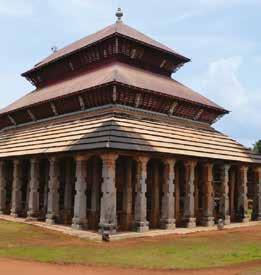
butions to the Kerala architecture. The towering Western Ghats on its east has successfully prevented influences of neighboring Tamil countries into present day Kerala in later times. While Western Ghats isolated Kerala to a greater extent from Indian empires, the exposure of Arabian Sea on its east brought in close contacts between the ancient people of Kerala with major maritime civilizations like Chinese, Egyptians, Romans, Arabs etc. The Kerala’s rich spice cultivations brought it center of global maritime trade until modern periods, helping several international powers to actively engage with Kerala as a trading partners. This helped in bring in influences of these civilisations into Kerala architecture. Influence of Hindu, Christian and Muslim Architecture
The craftsmen, who were highly skilled, have made creative and innovative use of wood within severe constraints laid down by the rules of building sciences. The basic principles of architecture remained faithful to Hindu scriptures, but the multi-religious social environment of Kerala added richness to this genre of wooden architecture. The Hindu, Christian and the Muslim communities with their corresponding influences made contributions with examples that ranged from the pragmatic to the highly expressive examples. The typical Hindu temple for instance,
stands out among the Indian temple typology in form, structural clarity, stylistic tradition, symbolism and most of all, in material and craftsmanship in wood. The Kerala mosque and church vary from their counterparts in the rest of the country on account of the adaptations made for the wet Kerala climate. The Kerala region had been connected with the western world through maritime trade since ancient times. Judaism was brought here as early as in the 1st century CE and Christianity and Islam followed it. In Kochi (former Cochin) there remains a Jewish synagogue and Christian church of St Francis, which retains the gravestone of Vasco da Gama. A legend says that one of the twelve apostles, St Thomas, came to southern India for missionary work, but there is no historical evidence. However, it is certain that Christianity was brought to India before the establishment of the Roman Catholic Church; Masses in
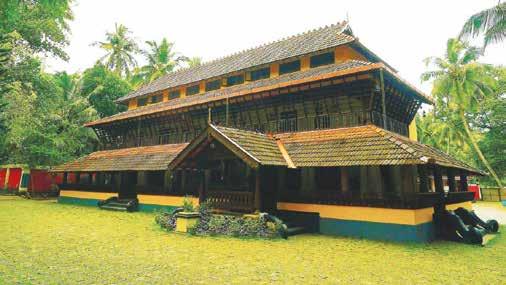
ancient Hebrew have been consecutively handed down even to now. On the other hand, the earliest Islamic mosque built in India is said to be the wooden one in Kodungallur. An inscription in the place says that it was constructed in 629. If so, it is far earlier than the first mosque in Delhi from the 12th century, or the Qutub Mosque. As that date indicates a time immediately after the birth of Islam, the story is incredible and the current mosque is quite new. And yet it is assumed that Muslims in Kerala did not come from Delhi in the north but from the west by sea routes of early Arabian traders. Kerala’s Traditional Architecture Endowed with ancient socio-cultural institutions, Kerala’s traditional architecture comprises temples, palaces & dwellings built in a unique system of wooden construction that are about 200 to 600 years old. Its homogeneity & continuity is unusual within the country & has been nurtured by the regional arts & crafts. The local
materials, craftsmen’s ingenuity & techniques as well as ancient literature on architecture have made this genre a sustainable human endeavour. The basic principles of architecture remained faithful to Hindu scriptures, but the multi-religious social environment of Kerala added richness to the typological essence. The Hindu, Christian & the Muslim communities with their corresponding influences made contributions to this genre of building art with examples that ranged from the pragmatic to the highly expressive. Residential & religious architectures have emerged under two distinct genre. This built environment also pauses a challenge of heritage conservation where tradition is at variance with social & architectural modernity. The course aims at giving an understanding about this architecture & conservation issues both as an expression of culture & as a product of crafts. After an introduction of the various architectural nuances, focus will be developed on craftsmanship, construction systems, technology & case studies through the lens of conservation. The various aspects of building conservation such as repairs, replacement & contemporary adaptation will be explored. Kutambalam Style What is especially interesting among wooden architecture in Kerala is the ‘Kutambalam.’ It is a kind of theater, which stands in the precinct of a large Hindu temple, for the performance of religious dramas called the ‘Kutiyattam’ on festive days, and occasionally of traditional music and dance. It is characteristic of the Kerala region, seen in many great temples such as in Thrissur (Trichur), Irinjarakuda, Guruvayur, Thiruvegappura, and Haripad. From the outset in India, since festivals and assemblies were usually performed outdoors, theaters have not existed. So it is not clear why it came to be erected only in Kerala. According to G. Panchal, there are Kutambalams in 16 temples. The one with the highest degree of perfection and the grander scale among them is that of the Vadakkunnatha Temple in Thrissur. At later temples in Kerala, a magnificent Entrance Mandapa came to be built in front of the Nalambalam. The Mahadeva Temple at Kaviyur has meticulous wooden carvings, made up of miniature sculptures, on the coffered ceiling of its Entrance Mandapa. Those sculptures of gods and warriors remind us of the highly stylized dancers of Kathakali, which is the most famous traditional performing art in Kerala similar to Kabuki in Japan. Architecture is ensemble of simplicity and elegance. It is tailored to suite Kerala’s climate and culture. The wood is used lavishly in temple construction especially for the roof structure, doors, sreekovil etc. Exquisite wooden carvings are also a specialty of Kerala temples. Lavish use of wood is also found
in ancient churches and mosques of Kerala. The ancient temples, churches and mosques have also adapted various architectural styles influenced by Dravidian style (notably pallava, Chalukya, and Chola) eg. Sree Padmanabha Swami temple, Suchendram temple, Kumara kovil etc. The ancient churches modeled their buildings in the pattern of temples. With the advent of Portuguese in 15th century Latinisation changed the designs of church building. The variety of temples, numbering more than 2000 dotting the Kerala state has no match with any other regions of India. The temples of Kerala highly developed in strict accordance to two temple construction thesis, Thantra-Samuchayam and Sliparatnam. While the former deals in developing structures that regulates energy flows so that positive energy flows in, while negative energy do not trend to remain retarded within the structure; whereas the latter deals in developing stone and timber architecture in such manner that each carved structure imbibe a life and personality of its own. Nalukettu-Architecture of Kerala They are houses with their peaked tiled roofs, wooden floors, wooden walls are seen. Old houses in Kerala invariably consist of flour rooms joined together in a rectangular form with a yard in the centre. It was suited for a joint family system prevalent then. Originally the adobe of wealthy Brahmins, Nairs, Christians and Ezhava families. The mansion is created using wood and tiles; central open courtyard is with wonderful architecture. The interiors of the house were tastefully decorated with a wealth of antiques made from teak, sandalwood, mahogany etc. The outer verandas along with the four sides of the Nalukettu are enclosed differently. While both the western and eastern verandas left open, the northern and southern veran-

das are enclosed or semi enclosed. In the middle of the enclosed southern or western salals is the area or the storage room, flanked by bed rooms. The floor of the Ara was raised even higher than that of the other salas to accommodate a nilavara or basement. Entrances to the building were provided at the centre of the east, west, north and south side depending on the position of the Ara. While arranging the rooms inside a Nalukettu, the kitchen should come only in the northern or eastern salas. Bed rooms are better located in the southern and western blocks. The ‘Madhya Soothras’ (centre line) in both directions must pass freely without any obstruction. The central veranda as well as the ‘Poomukham’ outside can be made more attractive by giving small architectural wooden pillars and trellis. The evolution of Nalukettu can be explained as an expansion of the concept of ‘sala’ enshrined in the ‘Vaastushastra’ the Indian science of architecture. The wealthy families constructed larger nalukettu and added to make ‘Ettukettu’ or mansions with eight ‘salas’ around two courtyards. On of the firmer grounds of Kerala, the Nalukettu rose upwards into two or three stories, the upper floor being reserved for the ‘Karanvars’ (Head of the family- elders) Ancient Palaces Kerala palaces are exquisite examples of the use of wood for making magnificient structures. Some typical examples are Padmanabhapuram Palace, Sakthan Thampuran Palace, Trichur, Poonjar Palace of Kottyam, Koykkal Palace of Nedumangadu, Mattanchery Palace of Kochi, Krishnapuram Palace of Kayamkulam etc. It may be noted that extreme care was taken to choose the wood for construction of these Palaces. The wood chosen was resistant to termite and other wood decaying insect attacks. There were
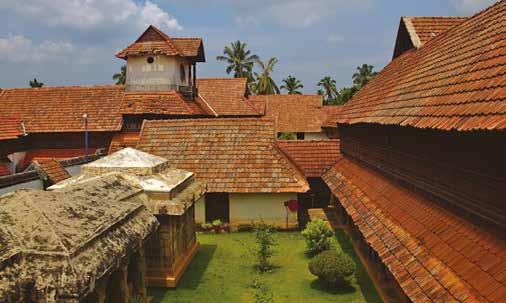
also resistant to attack by fungi and other microbial organisms. They were generally close-grained, strong, durable and heavy. Most of them were characterized by the presence of oils which rendered them resistant to wood eating, decaying and rotting organisms. Some of the wood species that have been used by our architects are listed below 1. Teak, Tectona grandis. The wood has deep yellow to dark brown colour. It is abundantly available in our forest. The wood is moderately hard, durable and fire resistant. It can be easily seasoned and worked. It takes up a good polish and is not attacked by white ants and dry rot. It does not corrode iron fastenings and it shrinks little. It is among the most valuable timber of the world and it was lavishly used in our ancient building. 2. Mahogany, Swietenia spp. It is reddish brown in colour. It takes a good polish and it is easy to work upon. It is durable and moisture resistant. 3. Rose wood or black wood, Dalbergia latifolia, D.melanoxylon. It is dark in colour. It is strong, tough and close grained. It is a handsome wood takes up a high polish. It maintains its shape well and is available in large sizes. It is excellent for wood carvings. 4. Sandal wood, Santalum album. It is white or red in colour. It has a pleasant smell. Exquisite carvings are made out of these wood. 5. Jack fruit tree, Artocarpus heterophyllus. The wood is yellw to deep brown in colour. It is heavy and hard. It is durable under water and in damp conditions. However, it cracks if exposed to direct sun. White ants do not attack it. 6. Aanjili, Artocarpus hirsutus. The wood is yellowish brown in colour, It is close grained and strong. It takes polish. It can be used under water and also in damp condition. 7. Coconut tree, Cocos nucifera. is a large palm. Coir (the fiber from the husk of the coconut) is used in ropes, mats, doormats, brushes, and sacks, as caulking for boats, and as stuffing fiber for mattresses. It is used in horticulture in potting compost, especially in orchid mix. The leaves also provide material for baskets that can draw well water and for roofing thatch; they can be woven into mats, cooking skewers, and kindling arrows as well. Leaves are also woven into small piuches that are filled with rice and cooked to make pusô and ketupat. Coconut trunks are used for building small bridges and huts; they are preferred for their straightness, strength, and salt resistance. In Kerala, coconut trunks are used for house construction. Coconut timber comes from the trunk, and is increasingly being used as an ecologically sound substitute for endangered hardwoods. It has applications in furniture and specialized construction, as notably demonstrated in Manila’s Coconut Palace. While it was believed that the
wooden culture of India was more concentrated in the Northern side, especially, in the Himalayas and the stone culture was more adopted in the southern sub continental areas having arid climate, people don’t know that certain southern regions of the country were rich in lush forests owing to its geography, Thus, wooden culture was adopted in the south Indian parts but confining only to some region. We know, four states fall in the boundaries of Southern India viz. Karnataka, Andhra Pradesh, Tamil Nadu and Kerala. Tamil Nadu and Kerala, lies to the southern part whereas Andhra Pradesh and Karnataka belong to it northern region. Separated by Western Ghats, TamilNadu in east and Kerala in west enjoy a different climate. Tamil Nadu, which we commonly refer to as Chennai is experiencing an arid facet of nature, mostly dry enough. Chennai natives envy the climate of Kerala and they frequently visit its neighbor to get soaked in the tropical climate. Hilly destinations like Munnar, Vagamon and Thekkady are their favorite haunts. The more one goes to the southern region of Kerala; more one experiences the Tamil culture and language. To get escape from the rude form of nature at Chennai especially during summers, people reach Kerala by picking an authentic tour package. Click here to know more about such authentic tour packages. Since Chennai is near to Kerala, travelers can access it by train, bus or by sea route. Pilgrim tours are more compared to sightseeing as they are highly religious. The difference in climate is more reflecting in the architecture of temples in Kerala and Chennai. Both are magnificent enough but they differ in the constituents used for the construction. Acknowledgements The authors express their sincere thanks to Dr. Ashok K Chauhan, Founder President, RBEF and Amity Group of Institutions & Dr. Atul Chauhan, Chancellor, Amity University, Uttar Pradesh for facilities and encouragements. References 1. Pushpangadan. P (2010) Conservation of Wooden structures in ancient buildings in Kerala, Key note address presented at the 42nd National Conference of Historic Buildings with special reference to wooden structure, Vylopilli Samskrithi Bhavan, Nalanda, Trivandrum. 2. Takeo Kamiya (1998) Wooden Architecture in India, Chapter 6 and 7 ‘Kenchiku Forum’ Architecrtural Magazine.

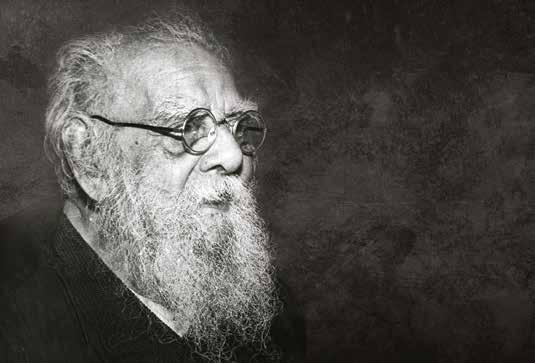
Dwelling on the caves of many customs and praxis, the world we live in still contributes space to new platitudes and way of living. While we have constant births of never ending, experimental and trending concepts and hypothesis, the other side of our world is birthing for aggressive and terrific changes. Some of them include discriminations and oppression based on caste, religion, language, gender, status and skin colour. Despite the fact that our world secretly loved oppression, we had many powerful leaders and influencers who stood for righteousness and humanity and made impactful protests and struggles, yet discrimination and oppression is still lingering around. According to a recent study, around 230,000 girls are being
Aswini Devi Jeyaprakash
killed each year due to obvious yet unseen discriminations in India alone. Social activists who voiced out for the equality of every human being have solely taken the side of rationality. Erode Venkatappa Ramasamy, respectfully called as Thanthai Periyar is a salient social activist and peculiar politician from Tamil Nadu. He opposed dominance and discrimination in any form. He brought noticeable changes in South India, especially in Tamil Nadu and Kerala and illuminated the light of rational thinking amongst the public. Even though his initial stages of spreading his rational ideas flew in the face of public, his stance on superstitious believes and typical conventions was encouraged by large groups of people anon, as it suggested equality- Equality for every man
and woman to lead a dignified life and to have the freedom to invest in their physical, mental and moral panache. In order to procure equality, Periyar started off by promoting social ethics and rational thinking that he hoped would consequently eliminate unjust discriminations. Periyar spent over five decades trying to bring changes in societal norms just by giving speeches and conducting non-violent protests in numerous places by putting up with the loathly and uninviting hospitality. His speeches inculcated the thought that every human is same in all aspects and discrimination and oppression is an absolute barbarism and is a nuisance. Periyar mainly focused on empowering women, illiterates and lower class people by inculcating awareness among them about the man-made rules in society that failed to make sense. Periyar’s casual style of verbal expression and his exactitude in articulation captivated not only the mundane masses, but also the well informed and civilized people. Eventually, he influenced many thousands of people to ponder over and as a reflection of that, his followers’ numbers reached new heights. Having born in a merchant family in Erode in the year 1879, Thandhai Periyar E.V. Ramaswamy after completing his schooling till 5th grade assisted his father with his business. As a young boy with appreciable coherence and eloquence, Periyar doubted and
scrutinized the contradictions he observed in Hindu mythology. As he grew, his lucidity got expanded. With his intelligibility and selfconfidence, he stood alone for what he believed was right and opposed the social system that encouraged oppression. He started the ball rolling off by removing his last name that denoted to his caste. E.V. Ramaswamy was a member of Indian National Congress Party from 1919 to 1925. While serving as the chairman of Erode municipality apart from working against oppression, he also promoted clothes made of Khadi and shunned imported clothes. In 1924, T.K. Madhavan initiated a satyagraha against this injustice that lasted for 18 months. Along with other leaders, Periyar contributed to the struggle by delivering witty and convincing speeches in and around Vaikom, where the ritually lower caste people were oppressed to a great extent and were denied to enter temples. His presence received unpredicted response in Kerala
due to which he was later arrested several times. Despite the charges taken on him by government, Periyar remained untamed towards the Vaikom issue that established an unbreakable connection between Periyar and Vaikom that tholed the history. Periyar’s pace in the public’s eye gripped when his wife and sister involved in the protests. After being elected as the President of the Madras Presidency Congress Committee, he advocated for the reservation of government jobs and education in favour of the needy. Soon, he resigned his post and vamoosed the party once he felt his efforts in establishing equality were being defeated due to apathy.

Lately, Periyar joined the South Indian Liberation Federation also called as justice party which shared alignment with the beliefs and motto of Periyar. In 1937, Periyar opposed the bringing of mandatory learning of Hindi into education system through Dravidian Movement that represented justice party. Tamils viewed the acceptance of Hindi as a form of bondage and eventually, opposition of Hindi played a major role in the politics of Tamil Nadu. Periyar took over the leadership of the justice party when it lost the mass support and lately, the party prospered in his leadership but consequently lost most of its active members who were educated and wealthy. In 1944 at a rally, Periyar declared that the party would be called henceforth as Dravidar Kazhagam (Dravidian’s party);a party that took social reforms not as a political duty but as a social duty to refrain from inequality. Significant political leaders like MGR and Karunanidhi swore by his ideologies and many leaders split from the Dravidar Kazhagam and came up with their own parties separately. Periyar’s pragmatic stance on women empowerment was clear sighted. He advised women to become self-sufficient and encouraged them to be educated, become financially independent and to get involved in self-defense techniques. Periyar firmly believed
E.V. Ramasamy statue at Vaikom town in Kottayam Dist., Kerala






